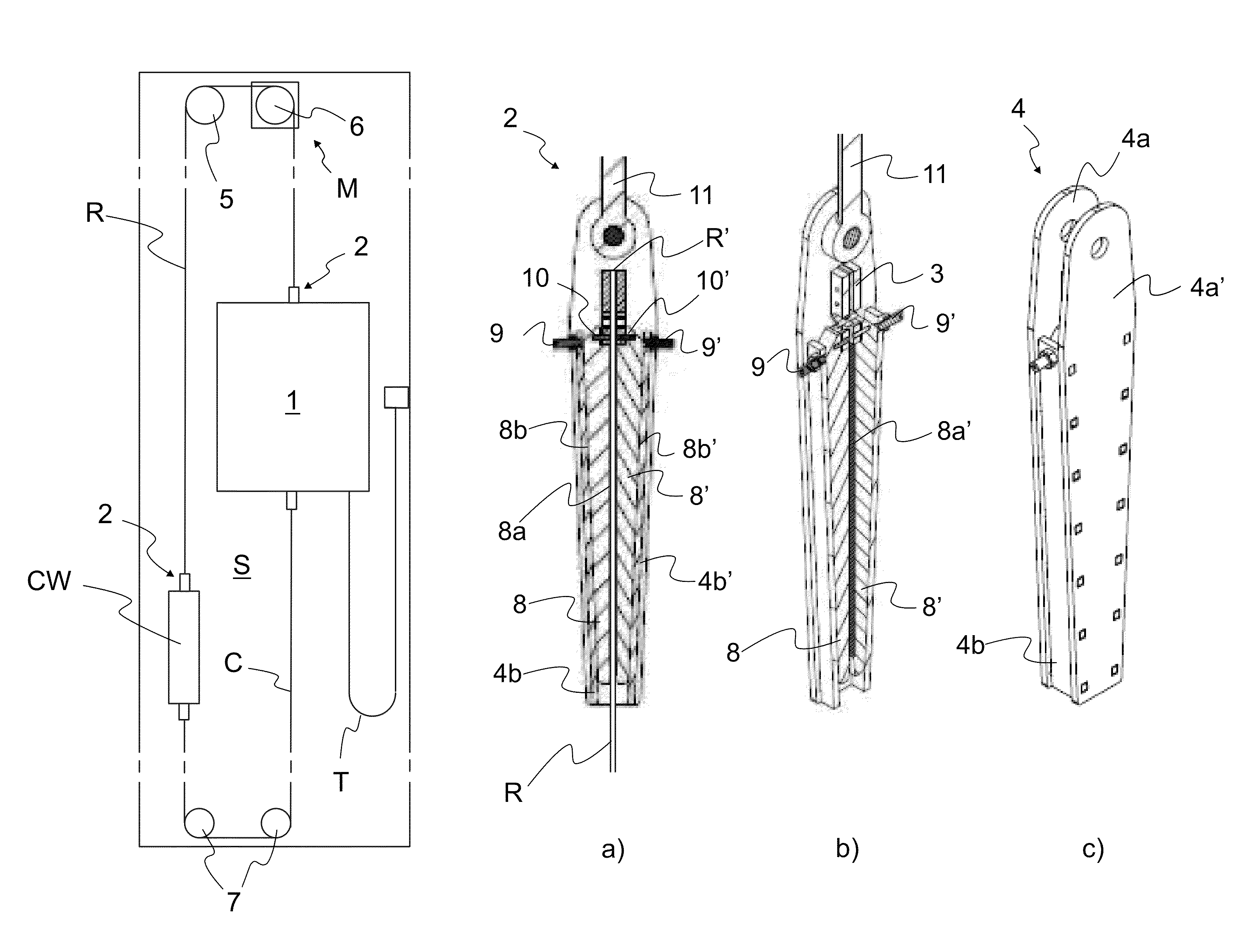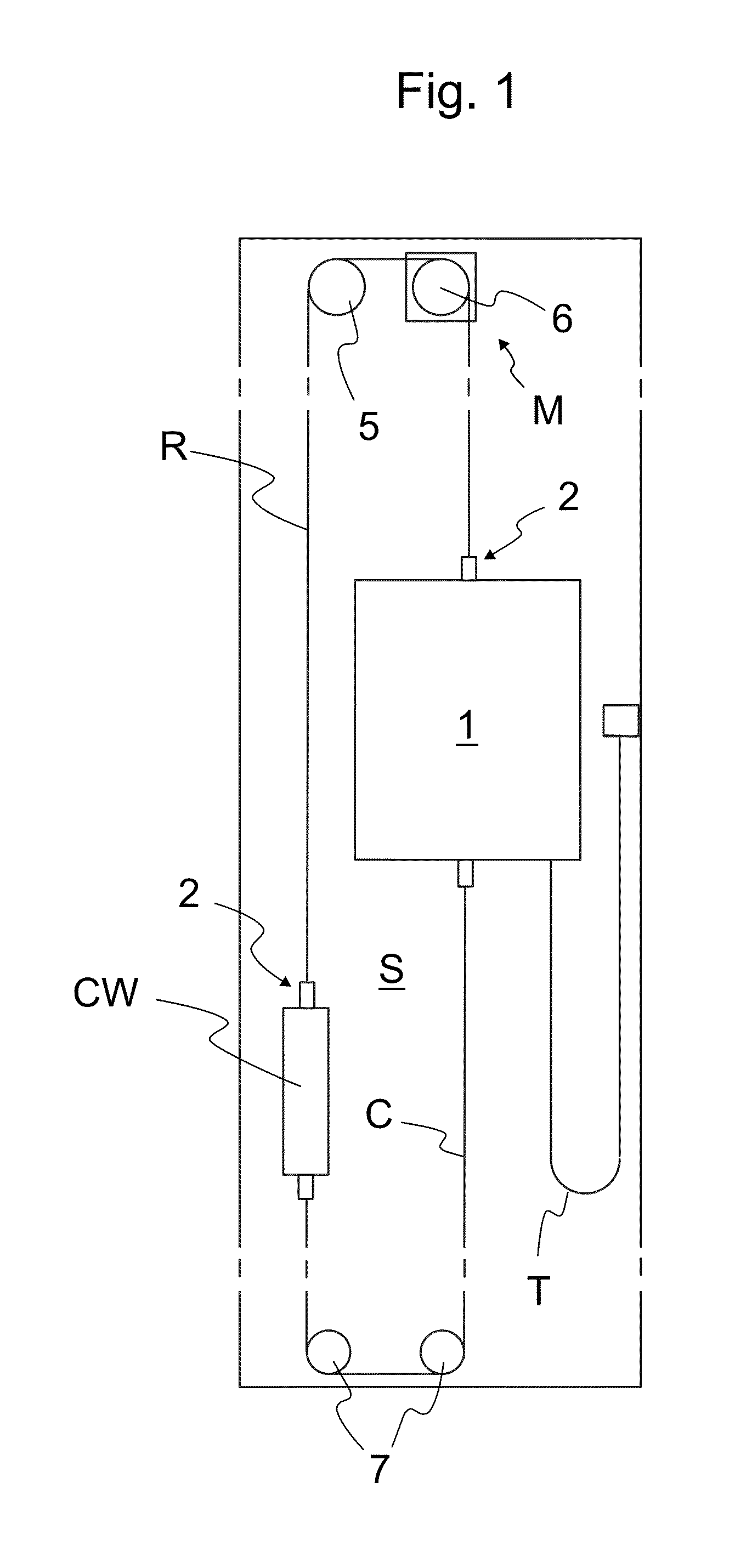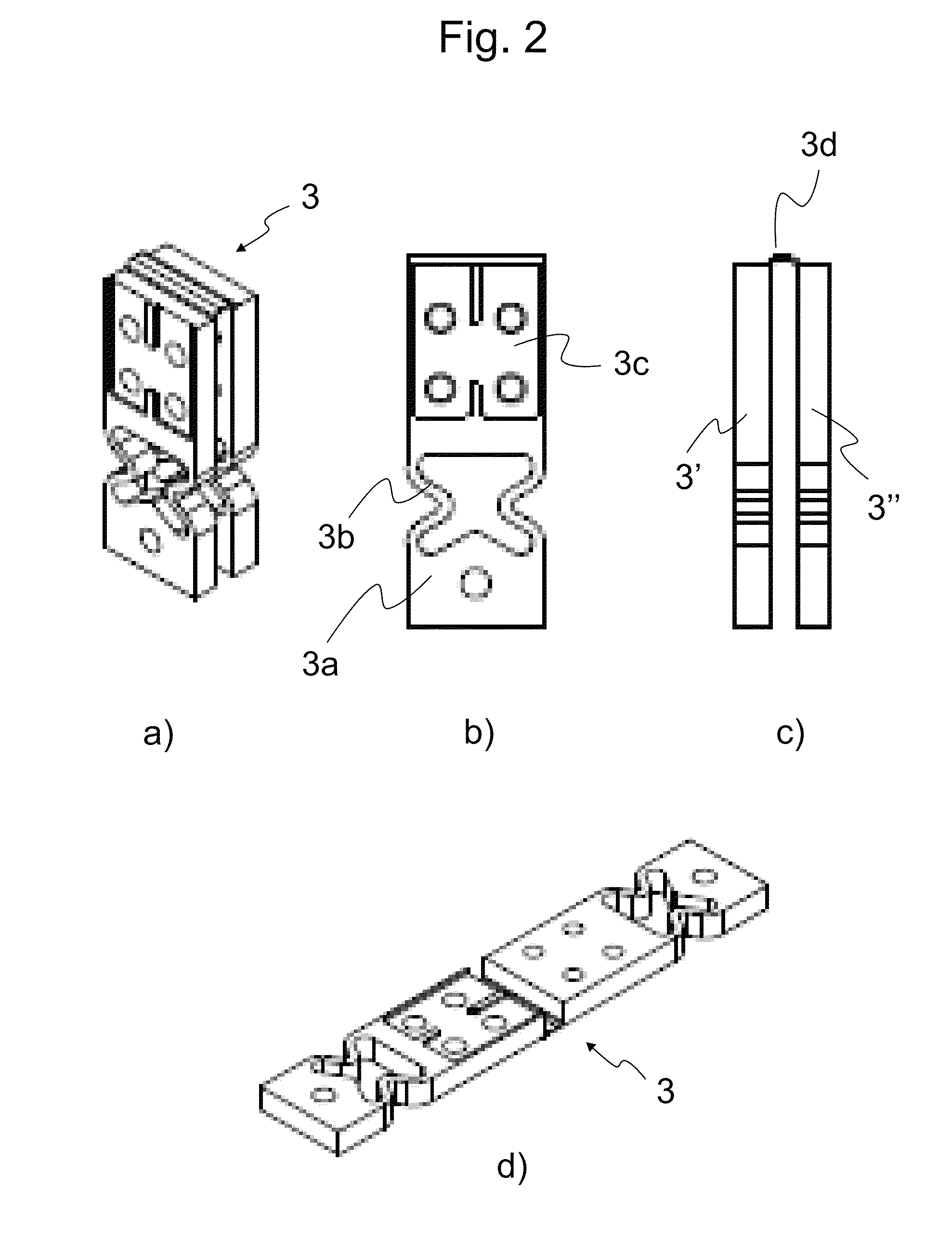Rope terminal assembly and an elevator
a technology of elevator terminals and cables, which is applied in the direction of elevators, vehicles/pulleys, textile cables, etc., can solve the problems of difficult to make mechanical attachments with elevator units without causing damage, high weight and large thickness, and laborious and slow installation process, so as to improve the quality of installation and speed up the installation process , the effect of cost-effectiveness
- Summary
- Abstract
- Description
- Claims
- Application Information
AI Technical Summary
Benefits of technology
Problems solved by technology
Method used
Image
Examples
Embodiment Construction
[0041]In FIG. 1 it is illustrated a preferred embodiment of an elevator where the elevator rope R, C is connected to the elevator unit 1, CW with a rope terminal assembly 2 according to the invention. The elevator has been arranged to comprise a hoistway S, and an elevator unit 1 movable in the hoistway S, the elevator unit being an elevator car 1 for transporting passengers and / or goods. The elevator arrangement may also comprise other movable elevator units such as the counterweight CW, as depicted. The elevator comprises lifting means comprising a lifting device M, roping comprising one or more suspension and transmission ropes R, each said rope R comprising one or more, preferably at least four load bearing parts 12a, 12b, 12c, 12d, attached with the rope terminal assembly 2 at least to one elevator unit 1, CW. Each rope R is guided to pass over the traction sheave 6 rotated by the hoisting machine M of the elevator and one ore more diverting pulleys 5. As the hoisting machine M...
PUM
 Login to View More
Login to View More Abstract
Description
Claims
Application Information
 Login to View More
Login to View More - R&D
- Intellectual Property
- Life Sciences
- Materials
- Tech Scout
- Unparalleled Data Quality
- Higher Quality Content
- 60% Fewer Hallucinations
Browse by: Latest US Patents, China's latest patents, Technical Efficacy Thesaurus, Application Domain, Technology Topic, Popular Technical Reports.
© 2025 PatSnap. All rights reserved.Legal|Privacy policy|Modern Slavery Act Transparency Statement|Sitemap|About US| Contact US: help@patsnap.com



